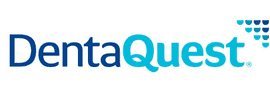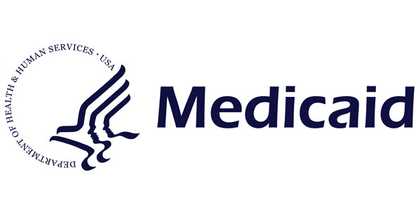Asking yourself, do I need braces? You’re in good company. Many people also wonder how to know if you need braces in the first place.






Save $250 off braces or Invisalign!*
Schedule your appointment online.
Asking yourself, do I need braces? You’re in good company. Many people also wonder how to know if you need braces in the first place. Orthodontic evaluations look at how your teeth, bite, and jaw work together, so you can make informed decisions about treatment. Whether you’ve noticed crowding, gaps, bite discomfort, or you simply want a more confident smile, a thorough assessment provides detailed insights and clear, personalized recommendations. This guide explains common signs you may need braces, how to know if you need braces with confidence, why early evaluation is valuable, and the modern treatment options available. When you’re ready, a convenient consultation and advanced diagnostics can create a plan aligned with your goals, schedule, and lifestyle.
Signs You Might Need Braces
It’s common to wonder if you need braces? Recognising potential warning signs early can protect your oral health and help you avoid bigger issues later. If you’re unsure how to know if you need braces, consider the whole picture, teeth alignment, bite function, and jaw position, to determine if braces or another solution could benefit you. Below are key indicators it may be time to schedule a consultation.
Crooked, crowded, or spaced teeth: Teeth that overlap, twist, or have visible gaps can be hard to clean effectively, which may raise your risk for tooth decay and gum disease. Misalignment can also impact how your smile looks and how confident you feel. Braces gently reposition teeth into a healthier, more balanced alignment, improving both function and appearance. If you notice crowding, spacing, or teeth that don’t seem to fit together well, a professional evaluation can clarify your options.
Difficulty chewing or biting: Trouble biting into foods, frequent cheek or tongue biting, or a bite that doesn’t feel even are all signs your bite may be misaligned. You might notice front teeth that don’t meet, back teeth that contact too soon, or a jaw that shifts to close. These patterns can strain teeth and cause uneven wear. Braces can align upper and lower teeth so they work together efficiently, making eating more comfortable and protecting your enamel. Knowing how to know if you need braces often starts with observing these everyday functional challenges.
Jaw pain or clicking: Ongoing jaw soreness, clicking, or popping may be linked to bite imbalances or misaligned teeth. Some people also experience headaches, facial fatigue, or tension after chewing. While jaw discomfort can have multiple causes, improving how your teeth meet often reduces stress on the jaw joints. An examination of your bite and symptoms can help determine if treatment is appropriate in a structured, evidence-based way.
If any of these signs sound familiar, the best next step is a professional assessment. A comprehensive evaluation can help you understand how to know if you need braces and provide a tailored treatment plan, so you can move forward with clarity and confidence.
The Importance of Early Evaluation
If you are still asking, do I need braces? An early orthodontic evaluation can provide definitive answers and set the foundation for a healthy, confident smile. The American Association of Orthodontists recommends that children have their first orthodontic checkup by age 7. Around this age, permanent teeth begin to emerge and jaw growth patterns become easier to assess, allowing clinicians to identify subtle issues, even when teeth appear straight. Adults can benefit from an evaluation at any time; it’s never too late to learn how to know if you need braces or whether improving alignment or bite function could enhance your oral health.
Early intervention can offer meaningful advantages. Addressing crowding, spacing, crossbites, overbites, and underbites during growth can reduce the complexity and length of future treatment. In some cases, early guidance creates space for incoming permanent teeth, supports better jaw alignment, and may lower the chance of extractions or more invasive procedures later. Early evaluation can also improve speech, chewing efficiency, and long-term gum health by making teeth easier to clean. For families and busy adults alike, a proactive approach can save time, expense, and stress in the long run, and can make it simpler to answer if you need braces with confidence.
At your first visit, the focus is answering your question: do I need braces? The process typically starts with a review of your dental and medical history, followed by a thorough exam of your teeth, bite, and jaw function. Digital photos and X-rays may be taken to provide a clear view of tooth positions and growth patterns. You’ll then receive an explanation of findings in straightforward terms, personalized treatment options, and transparent timelines and fees. If you or your child is a candidate for braces or another service, you’ll be guided through next steps so you feel confident about your plan. The goal is to make your first visit informative, comfortable, and centred on what matters most, your smile.
Available Treatment Options
When you’re wondering, “do I need braces?” it helps to understand the types of treatment available and how they work. Common options include traditional braces and clear aligners. Both can address crowding, spacing, bite discrepancies, and more with precision. Traditional braces use small, low-profile brackets and wires to guide tooth movement and are highly effective for mild to complex cases. Clear aligners use a series of custom, removable trays to gradually shift teeth and can be a discreet, convenient choice for many patients who prefer minimal visual impact. Exploring these choices is a practical step in how to know if you need braces and which method might suit your needs.
Choosing the right approach begins with a comprehensive assessment. Clinicians consider your smile goals, the complexity of movement needed, your lifestyle, and your budget. If you have significant rotations, severe bite discrepancies, or require precise control over tooth movement, braces may be recommended. If you prefer flexibility, such as removing trays for meals and brushing, and your case is appropriate, clear aligners can be an excellent fit. You’ll discuss priorities and be guided to a solution that balances effectiveness, comfort, aesthetics, and maintenance, helping resolve the question, do I need braces? In a personalized way.
Treatment timelines vary by individual and the complexity of your case. Many treatments fall between 6 and 24 months. Braces can be ideal for complex tooth movements that benefit from continuous, controlled forces, while clear aligners follow a planned sequence of trays that can be comparable in length for mild to moderate cases. Consistency is key, wearing aligners as directed and keeping scheduled adjustment visits for braces help ensure steady progress and predictable results. These factors are central to how to know if you need braces and what to expect during care.
Follow-up care is essential for lasting results. Throughout treatment, regular visits help monitor progress, make adjustments, and answer questions. After active treatment, retainers maintain your new alignment and help prevent teeth from shifting back. Personalized retainer plans and practical guidance for home care, brushing, flossing, and dietary tips tailored to your appliance, protect your investment and support long-term oral health.
If you’re asking, do I need braces? The best way to find out is with a comprehensive evaluation. Understanding how to know if you need braces involves assessing signs, reviewing imaging, and discussing goals with a qualified professional. From your first consultation to your final retainer check, a clear, comfortable, and effective process can help you smile with confidence.





